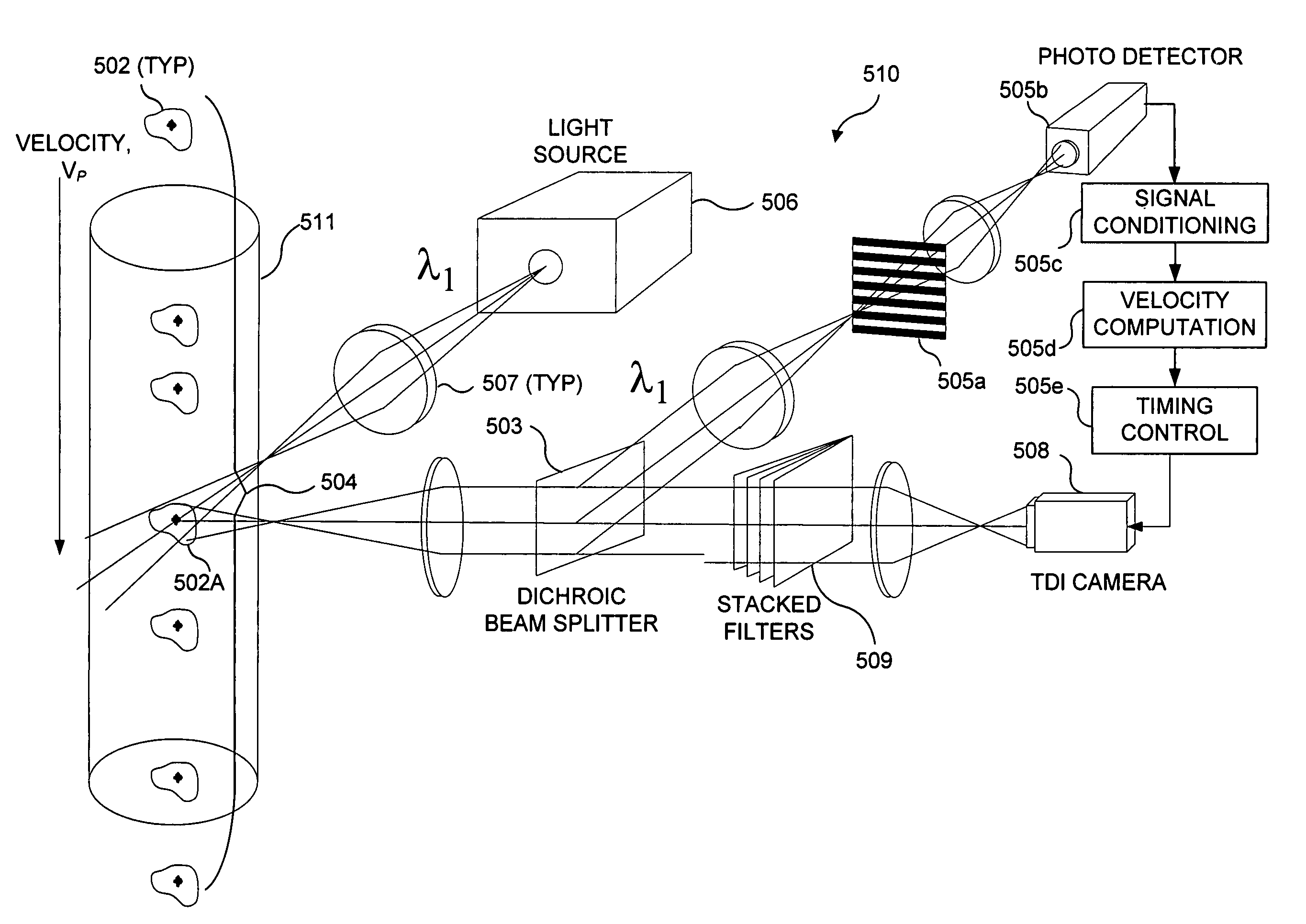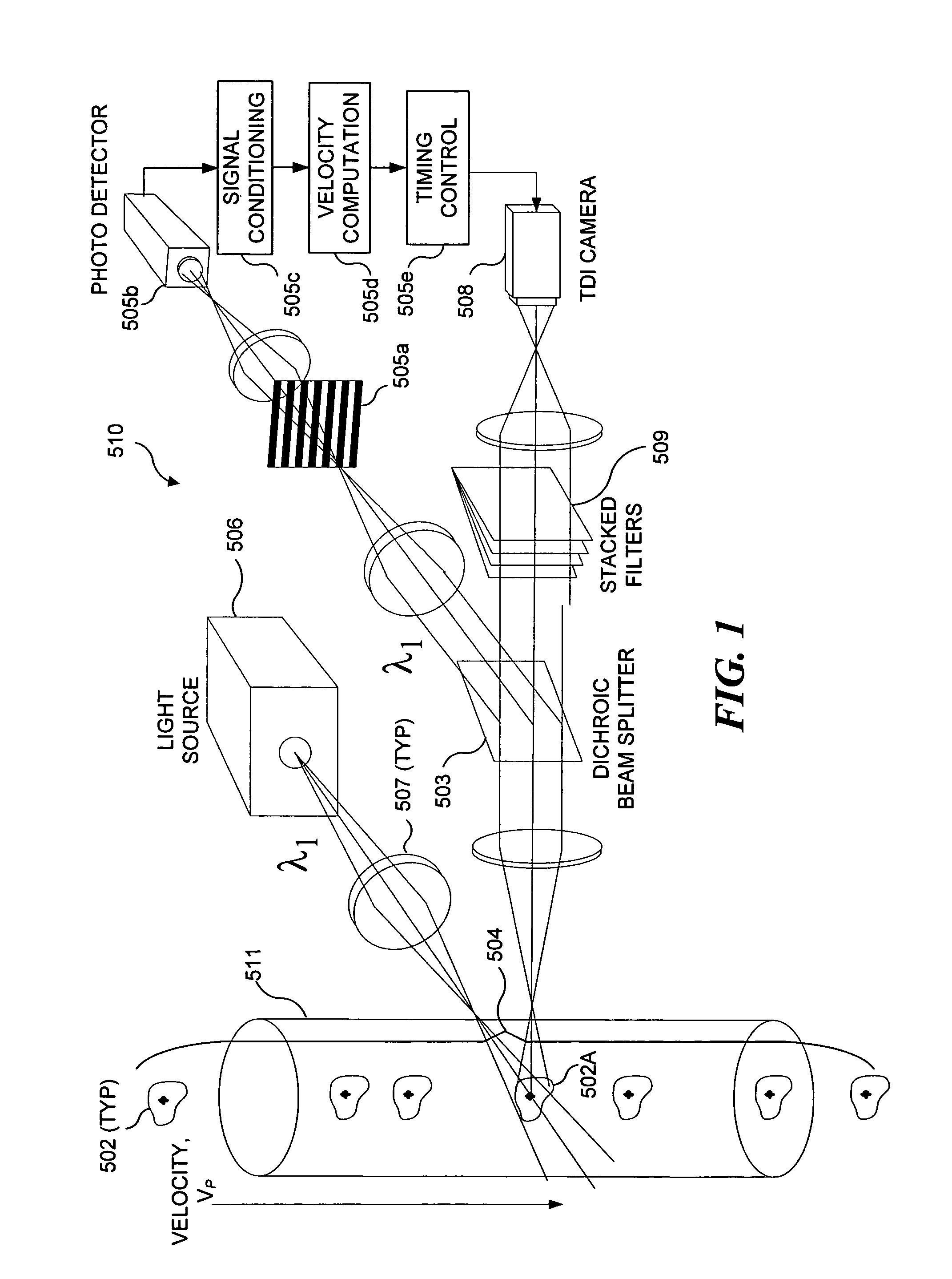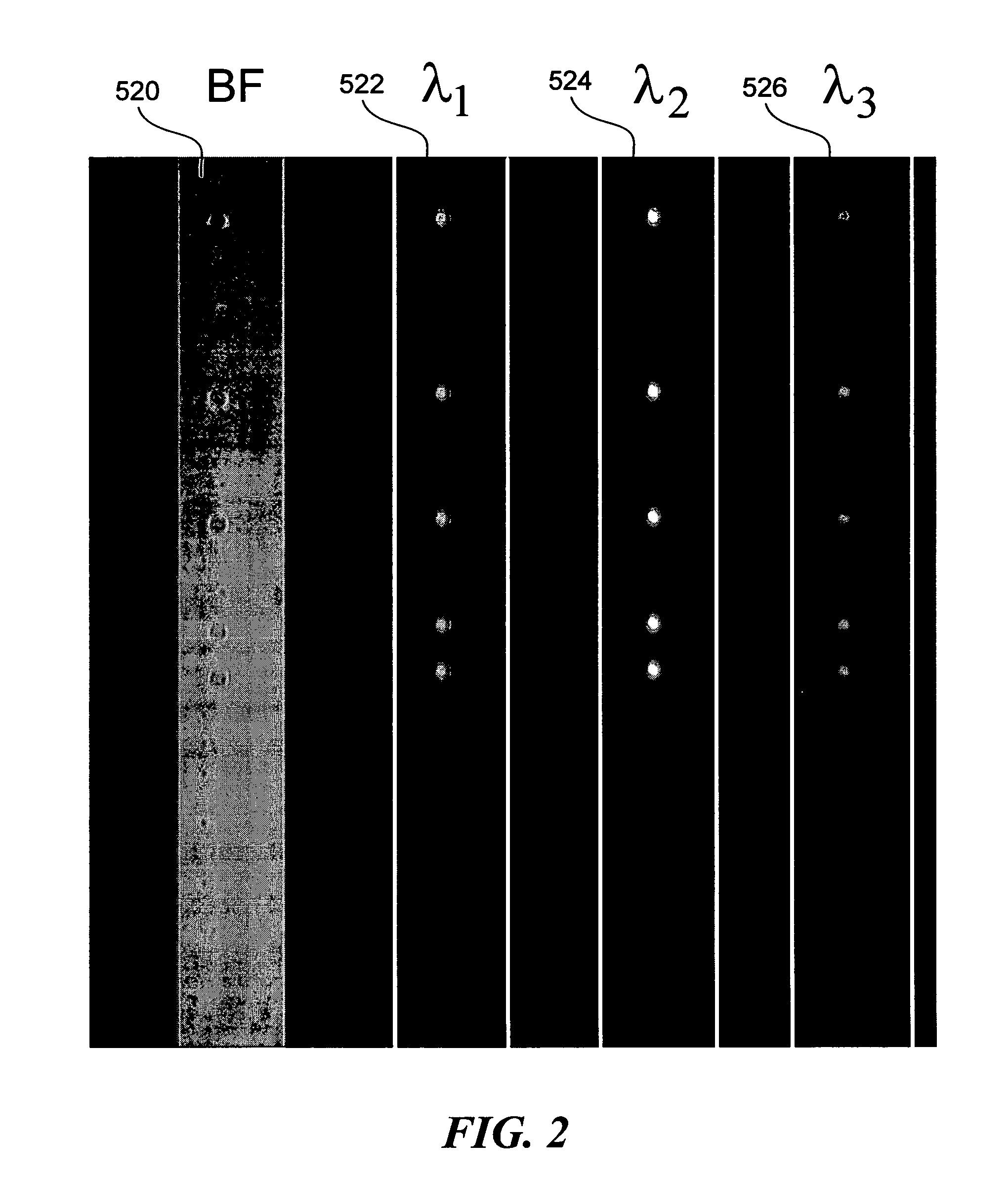Methods for analyzing inter-cellular phenomena
- Summary
- Abstract
- Description
- Claims
- Application Information
AI Technical Summary
Benefits of technology
Problems solved by technology
Method used
Image
Examples
Embodiment Construction
Overview
[0028]An aspect of the present invention relates to a system and method for imaging and analyzing conjugated biological cells entrained in a flow of fluid. In at least one embodiment, a plurality of images of biological cells are collected simultaneously; the plurality of images including at least two of the following types of images: a brightfield image, a darkfield image, and a fluorescent image. Images are collected for a population of biological cells (or objects with discernable morphological features). Once the imagery has been collected, the images can be processed to identify a subpopulation of images. The images in the subpopulation are processed to identify points of contact (i.e., synapses) between cell conjugates in the subpopulation. Further processing of the images in the subpopulation is performed to measure at least one characteristic at the identified synapses.
[0029]With respect to the following disclosure, and the claims that follow, it should be understood...
PUM
 Login to View More
Login to View More Abstract
Description
Claims
Application Information
 Login to View More
Login to View More - R&D
- Intellectual Property
- Life Sciences
- Materials
- Tech Scout
- Unparalleled Data Quality
- Higher Quality Content
- 60% Fewer Hallucinations
Browse by: Latest US Patents, China's latest patents, Technical Efficacy Thesaurus, Application Domain, Technology Topic, Popular Technical Reports.
© 2025 PatSnap. All rights reserved.Legal|Privacy policy|Modern Slavery Act Transparency Statement|Sitemap|About US| Contact US: help@patsnap.com



